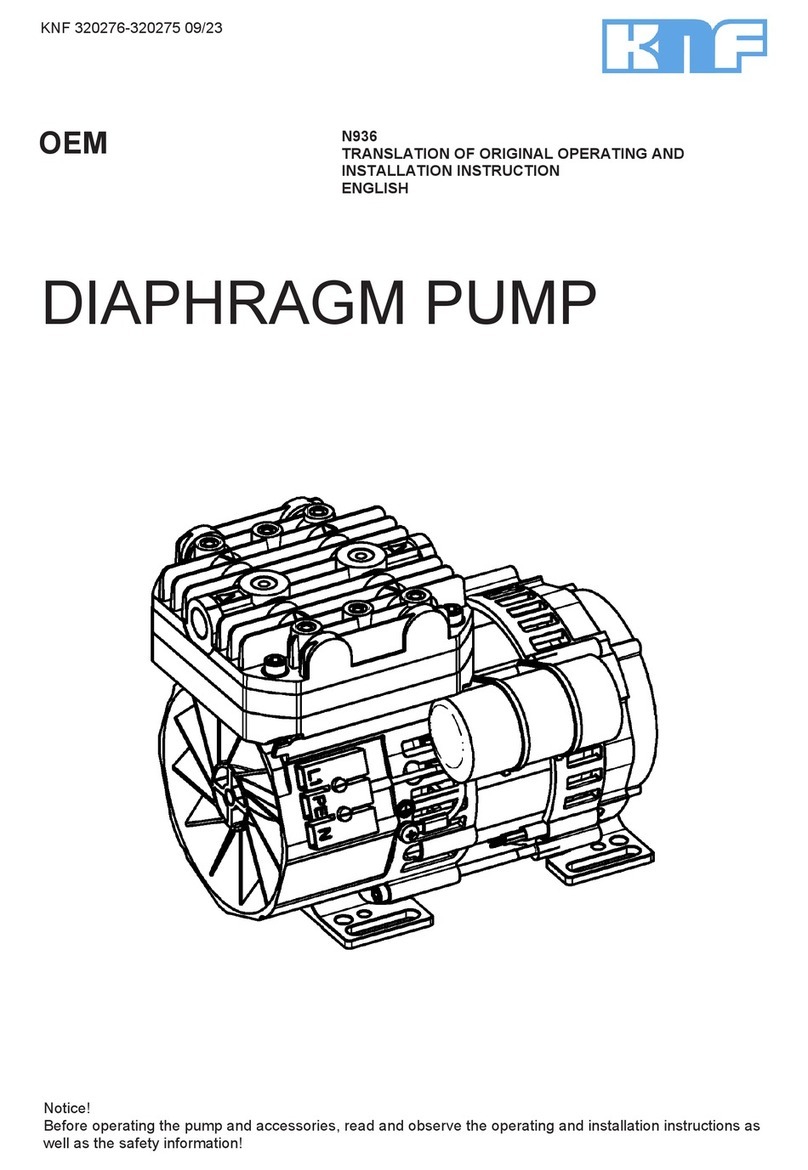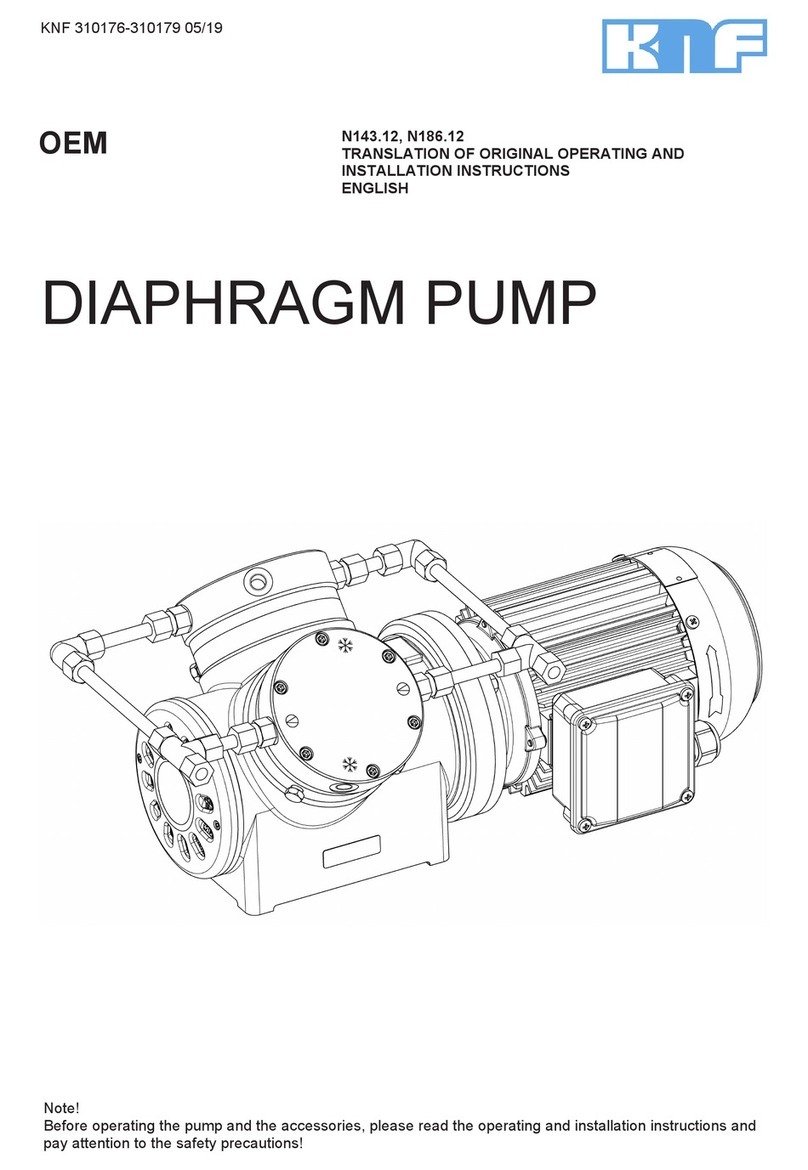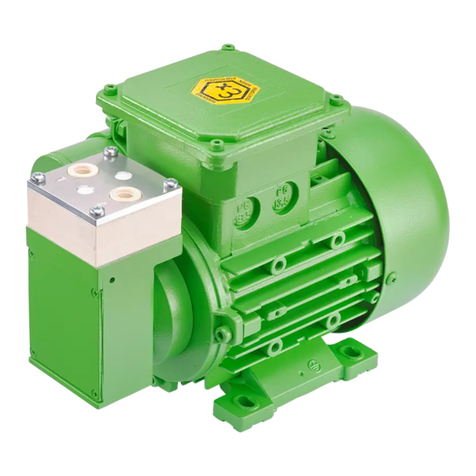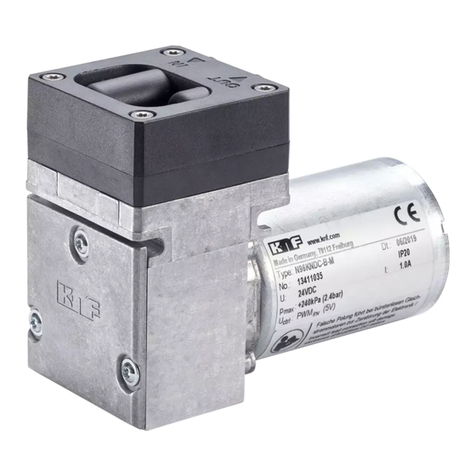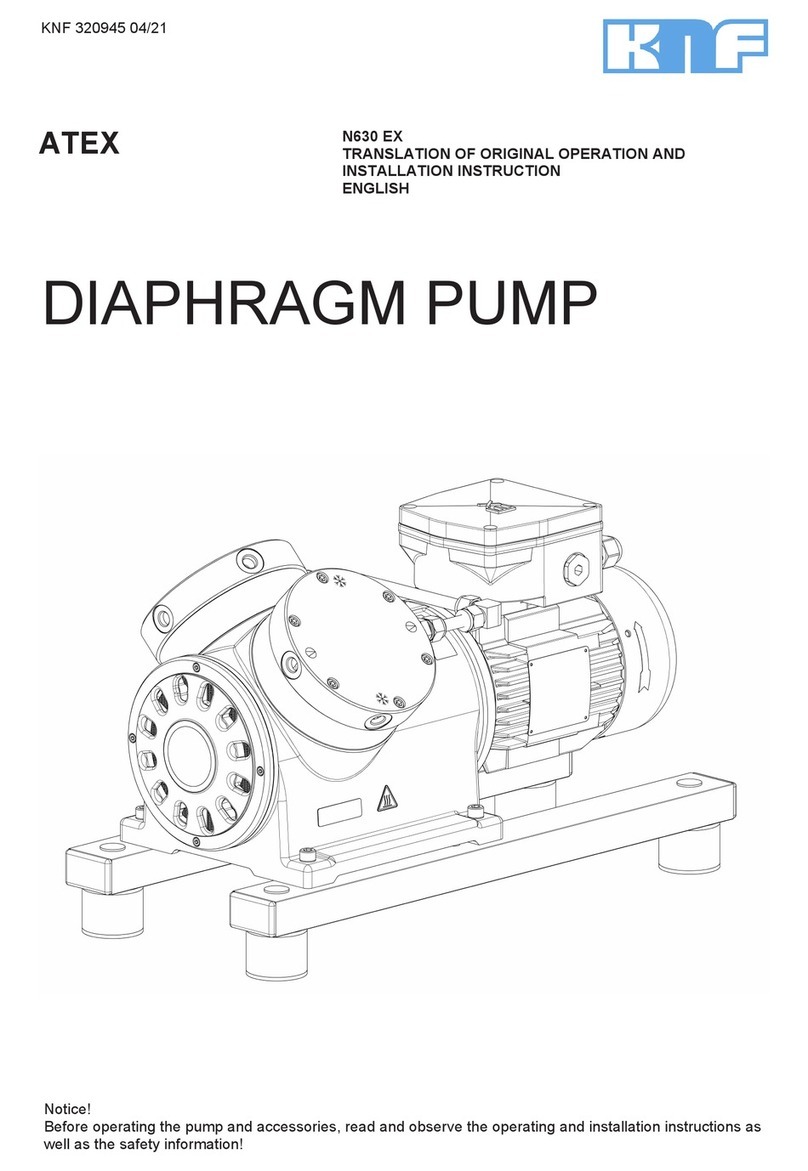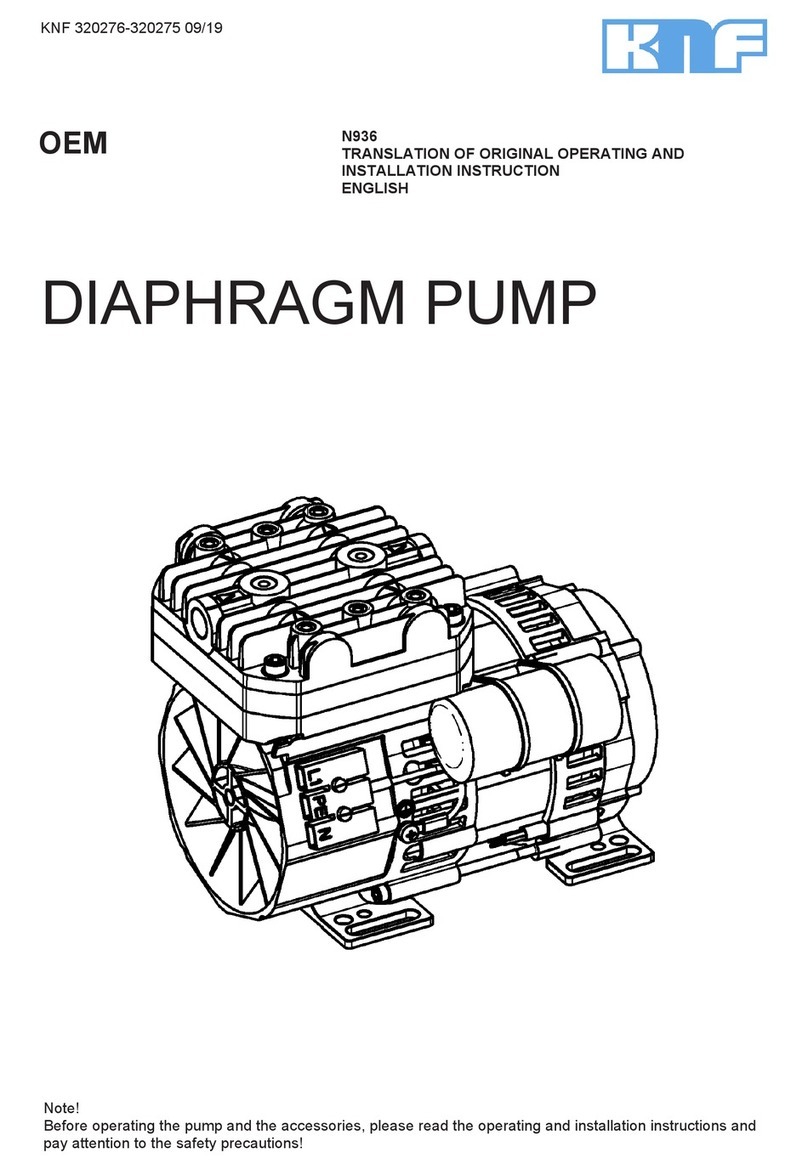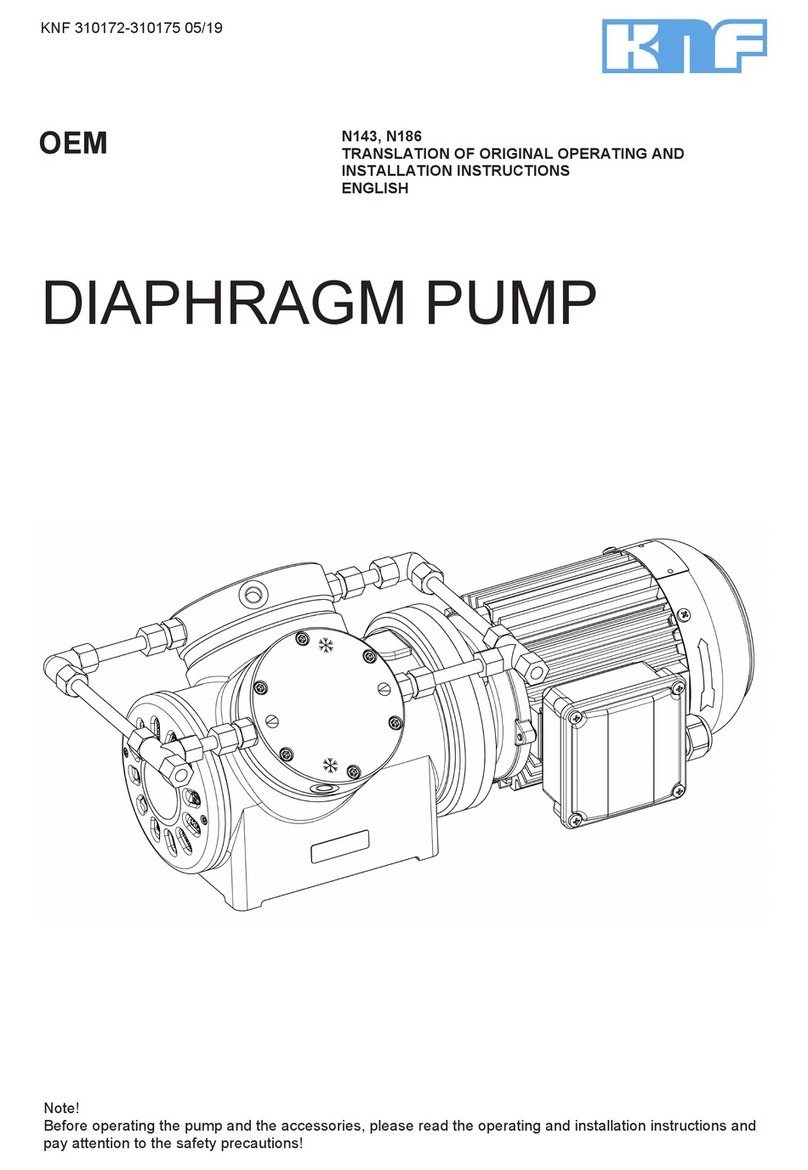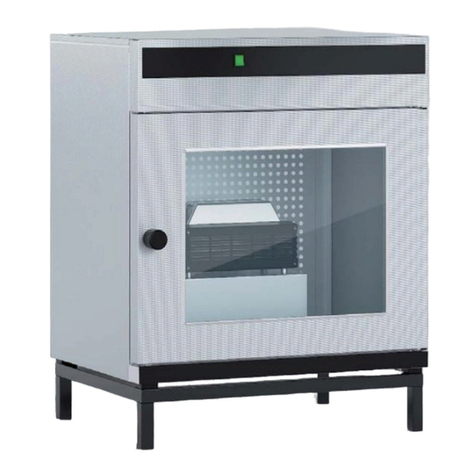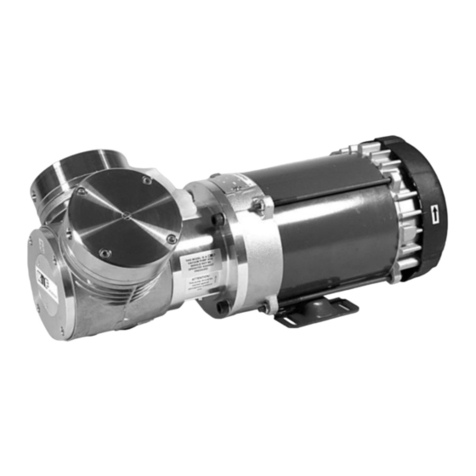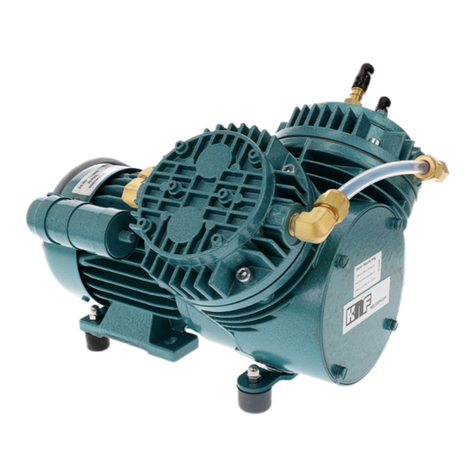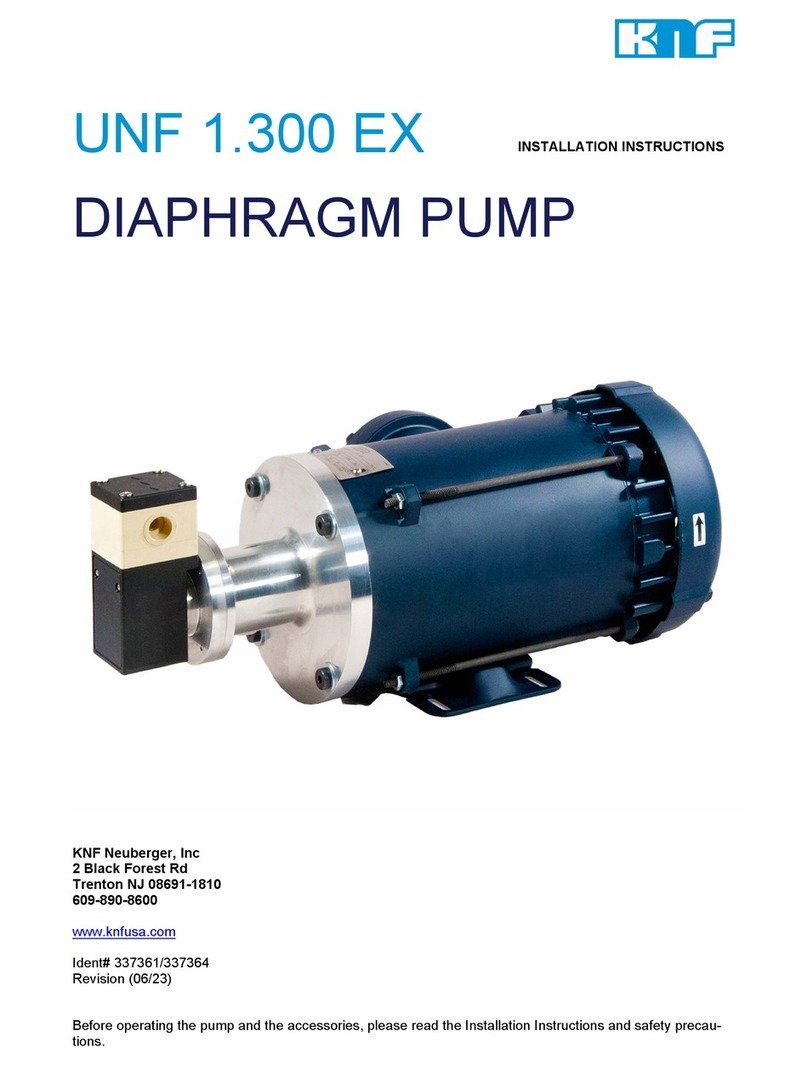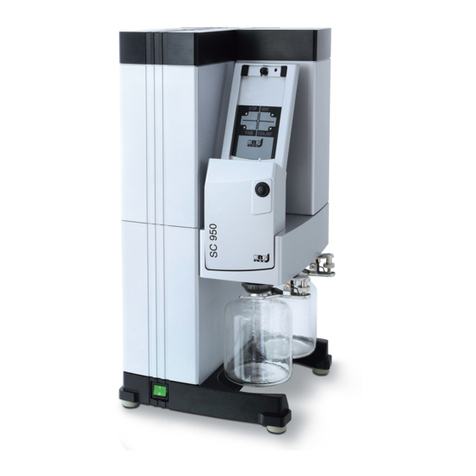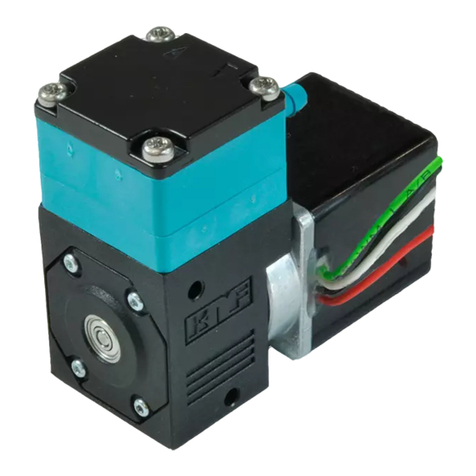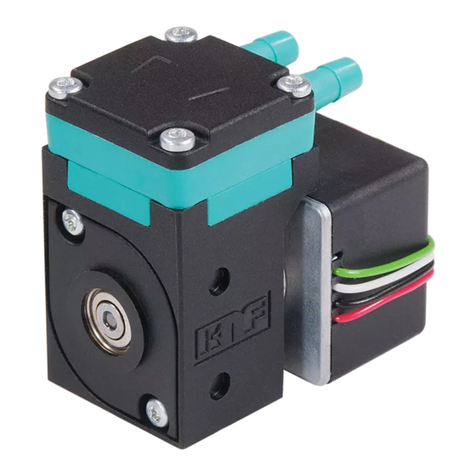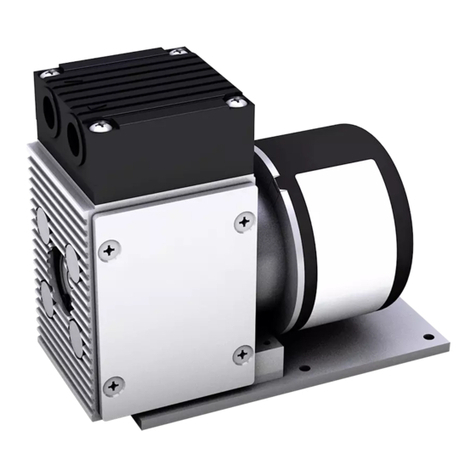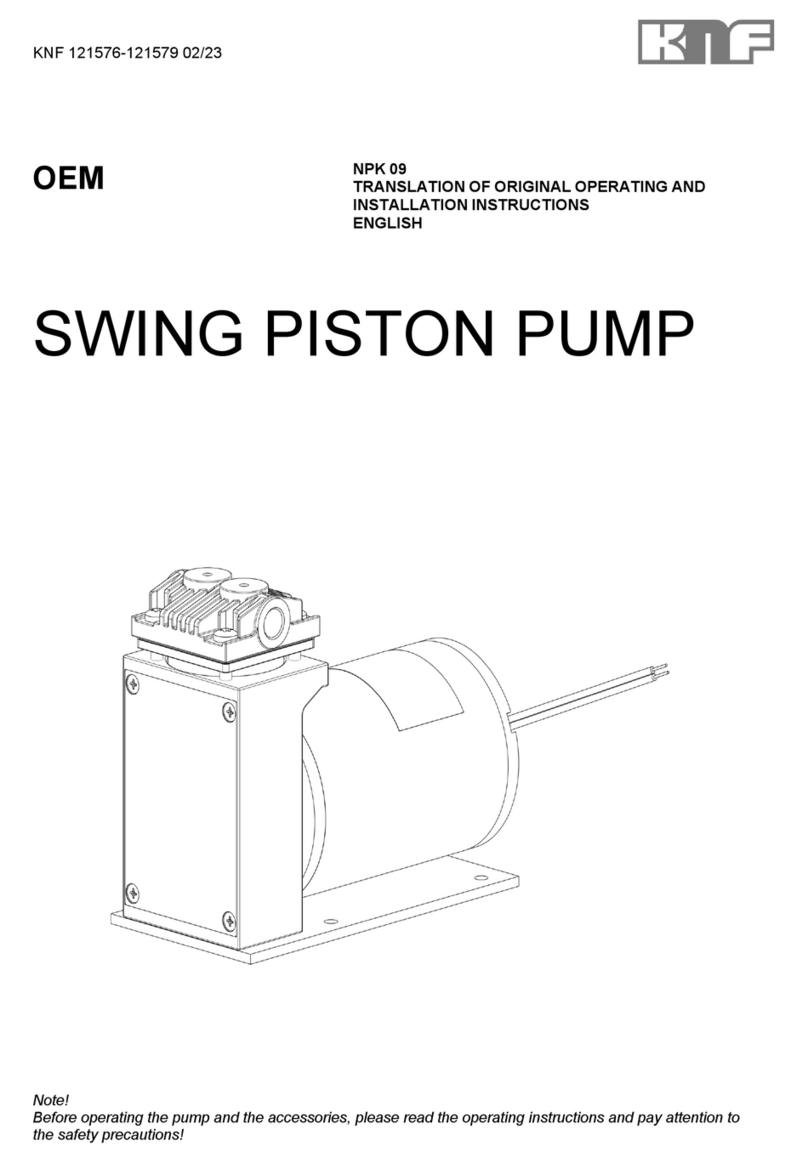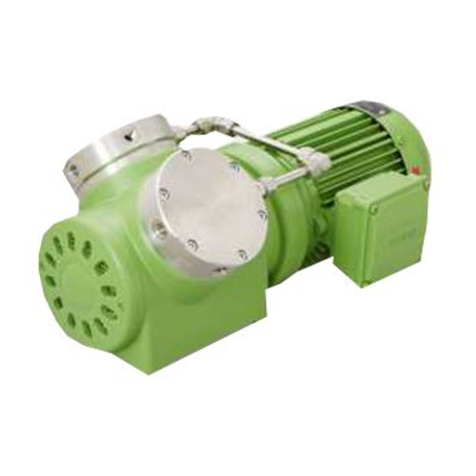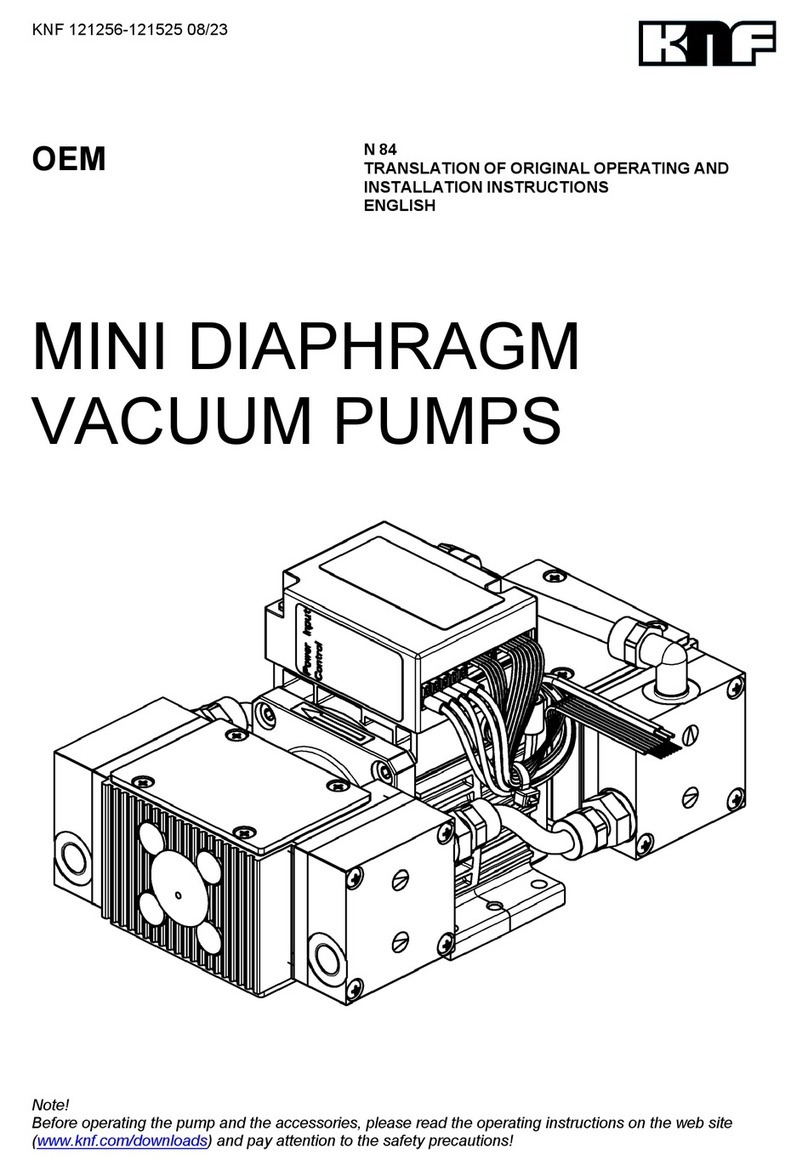
diaphragm vacuum pump N 860, N 880 Safety
Translation of original Operating and Installation Instructions, english, KNF 121252-121519 09/18 5
3. Safety
Note the safety precautions in Chapter 6. Installation and con-
nection
and 7. Operation.
The pumps are built according to the generally recognized rules of
the technology and in accordance with the occupational safety and
accident prevention regulations. Nevertheless, dangers can result
during their use which lead to injuries to the user or others, or to
damage to the pump or other property.
Only use the pumps when they are in a good technical and proper
working order, in accordance with their intended use, observing the
safety advice within the Operating and Installation Instructions, at
all times.
Components connected to the pump must be designed to with-
stand the pneumatic performance of the pump.
Take care that safety regulations are observed when connecting
the pump to the electricity supply.
Make sure that only trained and instructed personnel or specially
trained personnel work on the pumps. This especially applies to
assembly, connection and servicing work.
Make sure that the personnel has read and understood the Operat-
ing and Installation Instructions, and in particular the “Safety” chap-
ter.
Observe the accident prevention and safety regulations when per-
forming any work on the pump and during operation.
Ensure that the pump is separated from the mains and is de-ener-
gized.
The pump heads heat up during operation – avoid contact with
them.
Make sure that there are no hazards due to flow with open gas
connections, noises or hot gases.
Ensure that an EMC-compatible installation of the pump is ensured
at all times and that this cannot lead to a hazardous situation.
For pumps with dynamic mass balancing (.22-versions):
If the pump is mounted on a platform that is itself a vibrating sys-
tem, or contains one, care must be taken that the two systems do
not interfere each other.
When transferring dangerous media, observe the safety regula-
tions when handling these media.
If the diaphragm ruptures, the transferred medium will mix with the
air in the environment.
Take all necessary care to prevent this leading to a dangerous situ-
ation.
Be aware that the pumps are not designed to be explosion-proof.
Make sure the temperature of the medium is always sufficiently be-
low the ignition temperature of the medium, to avoid ignition or ex-
plosion. This also applies for unusual operational situations.
conscious manner
Handling combustible media


















